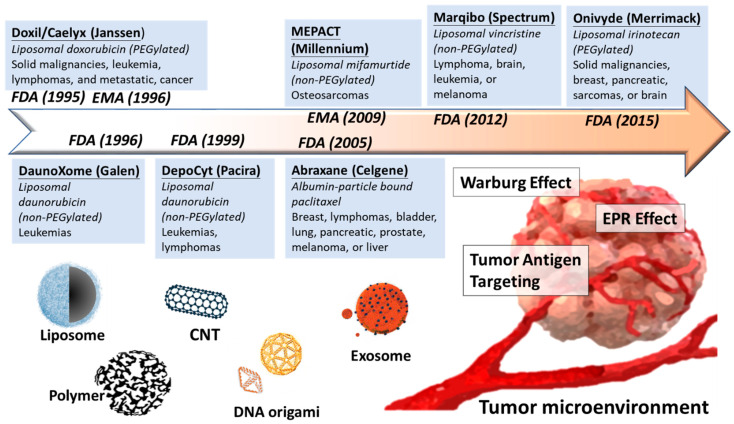Figure 1.
Development for nanomedicine reaching for tumor microenvironment. In past decades, plenty of nanocarriers are moving from preclinical bench work into clinical trial and finally approved for cancer therapy. The driving force of nanomedicine toward tumor microenvironment could be passive or active. Passive delivery relies on loose tumor vessels (EPR effect) and low pH (Warburg effect), while the active delivery can directly recognize tumor antigens by conjugating high-affinity molecules. Various novel and advanced materials of nanocarriers are designed for drug delivery, including liposome, polymer, CNT, DNA origami, and exosome.

